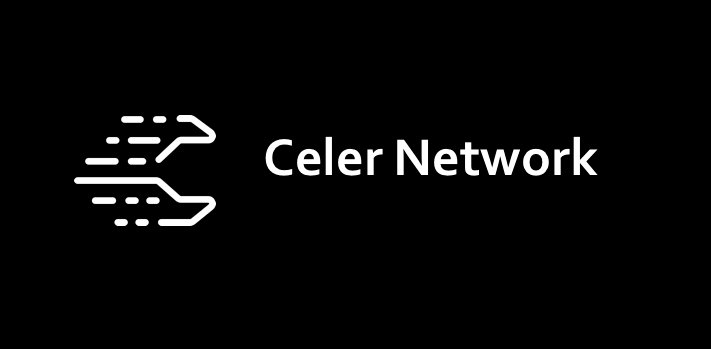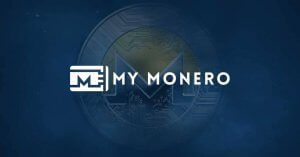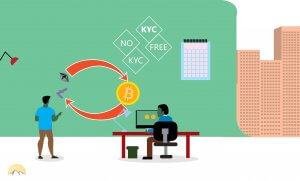While the first generation of blockchains inspired us with dazzling qualities such as decentralization, immutability, and radical transparency, it has also proven to have scaling issues as interest in cryptocurrency surges. For this reason, many cryptos have sprung up to address the scaling issue and even do even more.
The Celer Network is one such crypto project, and it promises to provide a new blockchain experience for users through interactivity, topnotch security, and low or zero fees to create and interact with decentralized applications and smart contracts.
The Celer Network is the brainchild of a team with PhDs from some of the most prestigious universities in the world, including MIT, UC Berkeley, Princeton, and experience from tech giants like Google, Amazon, Cisco, HP, and more.
In this article, we go deeper into the Celer Network and discover what makes it stand out from other crypto projects.
Crypto’s Scalability Problem
As cryptocurrency has become more popular in recent years, it has become clear that the traditional architecture of blockchain cannot really support millions of users. Nothing has made this clearer than Cryptokitties, a game atop Ethereum’s blockchain that allows users to buy, breed, and sell virtual cats.
This game became so popular, with a massive surge in users, that the Ethereum blockchain couldn’t support it optimally anymore. As such, transactions took days to be completed. The developing team had to increase transaction fees to reduce the traffic on the blockchain.
The Celer Network
Breaking down Celer
At its very core, the Celer Network comprises two components:
- cStack – Celer’s off-chain architecture that can be integrated on different blockchains
- cEconomy – the network’s cryptoeconomics (combination of cryptography and economics) model.
cStack
cStack features these layers:
- cChannel: A generalized state channel and a side chain suite that maximizes utilization of liquidity
- cRoute: An optimal transfer route with high throughput
- cOS: A developed framework that supports off-chain enabled applications
What is cChannel?
As an off-chain solution, cChannel utilizes the two underlying components of off-chain platforms: state channel and sidechains.
A state channel is one that allows two-way communication between participants, allowing them to conduct transactions outside of the blockchain. A state channel has these characteristics:
- A segment of the blockchain is locked up via a smart contract arrangement
- Participants in a transaction sign off transactions among each other without involving miners at all
- After the channel closes, the final state is added on the main chain
Some state channels deal with payments only. Celer’s state channel tracks all the programs that may occur between the parties, including payments.
Why Are State Channels Important?
To understand why state channels are useful, think of the blockchain. As an example, on the Bitcoin and Ethereum blockchains, users have to wait until a supermajority of nodes in the network vote for transactions to go through. Also, as more users interact with the network, this voting process takes longer. As you can see, this process is slow and unideal.
This is where state channels come in. Since transactions are taking place between two parties instead of passing through the mining verification process, they are simple, direct, and quick.
State channels also provide strong privacy. Blockchain transactions are available on a public ledger, and thus, anyone can see them. But state channel transactions are only known between the two transacting parties.
Celer network hopes to create a ‘state channel network,’ which is a network of individual state channels designed such that they can route state changes through each other. Via such a network, users may not have open channels with each other, but they can open a virtual channel between themselves.
What is cRoute?
To understand the Celer network’s cRoute, let’s do a quick run-through of the problems with existing state channels, mainly the Lightning Network and the Raiden network.
State channels depend on state routing, which determines the speed and volume of transactions on a state channel, which is why it needs to be designed efficiently.
The Lightning Network uses “Flare,” a type of Landmark Protocol, while the Raiden Network utilizes the A* tree search, a mechanism designed to look for the shortest routing path.
Both these mechanisms are scrambling to find the “shortest route between two points.” While this mechanism helps put out a good throughput, it changes network topology (arrangement of the elements in a communication network) and, as such, interferes with the overall balance of the network.
Distributed Balanced Routing
Celer hopes to remedy this using the Distributed Balanced Routing (DBR). DBR provides for transparency and network balancing in the routing process. DBR is akin to a river flowing downhill. It doesn’t know its final destination. It just follows gravity. Here are the benefits of the DBR algorithm:
- Provably optimal: It tracks the most optimal route for transfer requests
- Channel balancing: Each state channel is built to maintain balanced transfers for the network’s topology
- Complete decentralization: Its decentralized algorithm provides for each node to only need to communicate with its neighbors.
- Failure-resistant: the DBR algorithm can detect and adapt to unresponsive nodes ultra-fast. If some nodes fail, the remaining nodes will pick the slack and still deliver the maximum possible throughput.
- Privacy: Thanks to DBR’s multi-channels, transactions are accorded a high level of privacy without the need for additional privacy settings or tools. It can also integrate Tor-like routing to ensure anonymity.
cOS
coS is a framework that aims to help developers build decentralized applications (DApps) of a high level of abstraction. (Abstraction means creating a system such that the average person can use without the need to know the complex technology behind the scenes.)
Via cOS, developers will be able to create two categories of DApps:
- Simple pay-per-use applications: These applications will allow users to receive small payments from the real world and stream them through the payment network.
- Complex multi-party applications: These applications will improve the current smart contract models with new techniques such as metaprogramming and annotation processing.
cEconomy
cEconomy is the second most important value proposition of Celer. This cryptoeconomic model aims to ensure that the network’s ecosystem remains stable and functional at all times. It plans to achieve these trade-offs via these mechanisms:
Proof of Liquidity Commitment (PoLC), which is a virtual mining process tasked with acquiring liquidity for the off-chain ecosystem. The Celer Network has members known as “Network Liquidity Backers” who commit their liquidity (like ETH) to the Collateral Commitment for a certain time, after which are rewarded with CELR tokens as a reward. This is what maintains liquidity in the network.
Liquidity Backing Auction (LiBA), which helps off-chain service providers obtain liquidity through a crowdlending model. A lender’s priority status is determined based on the amount of solicited liquidity and the size of the stake in CELR.
State Guardian Network, a special side-chain that protects off-chain states when users are offline to ensure the availability of the network. To become state guardians, CELR token holders need to stake their CELR with the SGN, upon which they become eligible guardians.
What is CelerX?
CelerX is a Celer app and the only layer-2 application available on Android and iOS. Through the app, users can:
- Use Celer Pay to instantly money with zero costs
- Play a variety of games with zero or ‘millisecond’ latency and stand a chance to win prizes
Since its launch, CelerX has reached $1.4m+ in total prizes awarded, 11,000 players, and 300,000 matches from 88 countries.
Funds deposited on Celer Pay are in your complete control at all times. CelerX uses the ERC-20 Game Token (GT) through which users can practice games like Solitaire Win, Fishjump, Diamond Break, Frog Jump, Fruit Punch, etc. in the app.
The app provides competitions for approximately 80% of the world and 38 US states. As of February 25, 2020, users from these US states are not eligible for the games due to gaming restrictions in the states: Arizona, Arkansas, Connecticut, Delaware, Florida, Lousiana, Maryland, Montana, South Carolina, South Dakota, and Tennessee. Users from Maine and Indiana are prohibited from card games.
Crypto-based games have proved to be a hit with the masses (cue Cryptokitties), and CelerX hopes to capitalize on this by providing a platform for skill-based gaming mobile-based e-sports. Through the app, users can buy cryptocurrencies through credit cards, Paypal, and ApplePay – a first not only in blockchain-based gaming but the mobile gaming industry itself.
Tokenomics of Celer
The Celer token helps keep the network’s liquidity stable while also acting as a medium for payments and transaction fees.
These are the Celer token values as of February 25, 2020. The token is trading at $0.003660 at a market rank of #289. Its market cap is $13, 262, 362, and its 24-hour volume is 4, 825, 975, with a circulating supply of 3, 624, 044, 542. It has a total supply of 10 billion and a maximum supply of the same value. Its all-time high is $0.0302469 on March 25, 2019, while its all-time low was $0.003150 on January 24, 2020.
Closing Thoughts
Celer Network is not another run-of-the-mill crypto scalability project. It utilizes clever layer-2 solutions that put security and privacy at the forefront, always. Its CelerX app model is peerless, as is its cStack and cEconomy components. The project shows a lot of promise, and it will be interesting to see how it pans out in the future.






